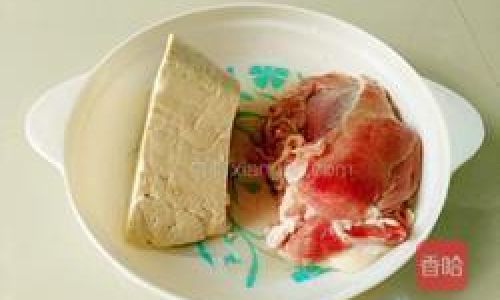Introduction
White fungus, scientifically known as Tremella fuciformis, is a type of edible mushroom that has been cherished in Asian cuisine for centuries due to its unique texture and numerous health benefits. This delicate, translucent food item is often used in soups, desserts, and various culinary preparations, adding both flavor and nutritional value to dishes. One of the most frequently asked questions among consumers and chefs alike is how long can white fungus remain fresh without spoilage. Understanding the shelf life and proper storage methods of white fungus is crucial to ensuring its quality and safety for consumption.
Understanding White Fungus: A Brief Overview
White fungus grows naturally on dead or decaying wood, primarily in tropical and subtropical regions. It is characterized by its jelly-like appearance and its ability to absorb and retain a significant amount of water. This unique property makes it an excellent ingredient for dishes that require a smooth, silky texture, such as traditional Chinese desserts like white fungus soup.
Nutritionally, white fungus is a rich source of dietary fiber, vitamins, and minerals, including vitamins D and B, calcium, potassium, and iron. It is also low in calories and fat, making it a popular choice among health-conscious individuals. Its ability to enhance immune function, improve skin health, and support digestive processes has further contributed to its widespread use and popularity.

Shelf Life of White Fungus: Factors to Consider
The shelf life of white fungus can vary significantly depending on several factors, including its initial quality, packaging, storage conditions, and whether it has been processed or is in its raw, dried form.
-
Raw vs. Dried White Fungus
-
Raw White Fungus: Fresh, unprocessed white fungus has a relatively short shelf life. It should be consumed within a few days of purchase to ensure optimal freshness and quality. Proper refrigeration is essential to extend its shelf life, as high temperatures can accelerate spoilage.
-
Dried White Fungus: Drying is a preservation technique that significantly extends the shelf life of white fungus. Dried white fungus can last for several months to a year when stored in a cool, dry place, away from direct sunlight and moisture. Proper packaging, such as airtight containers or vacuum-sealed bags, further protects it from environmental factors that could lead to spoilage.
-
-
Packaging and Storage Conditions
-
Packaging: The packaging of white fungus plays a crucial role in maintaining its freshness. Airtight containers or vacuum-sealed bags prevent oxygen exposure, which can cause oxidation and degrade the quality of the product. Additionally, moisture-proof packaging helps keep the fungus dry, preventing mold growth and bacterial contamination.
-
Storage Conditions: Temperature and humidity are the two most important environmental factors affecting the shelf life of white fungus. For dried white fungus, a cool, dry place with temperatures between 15-20°C (59-68°F) and low humidity is ideal. For raw, refrigerated white fungus, maintaining a consistent temperature of around 4°C (39.2°F) or below is crucial.
-
-
Quality and Processing
-
Initial Quality: The quality of the white fungus at the time of purchase is a significant determinant of its shelf life. High-quality, fresh white fungus will have a longer shelf life compared to lower-quality or already partially spoiled products.
-
Processing Methods: Processing techniques such as sulfuring or blanching can extend the shelf life of white fungus by inhibiting microbial growth and preserving its color and texture. However, consumers should be aware of potential health risks associated with sulfur-treated foods and opt for products processed using safer methods.
-
Signs of Spoilage in White Fungus
Identifying the signs of spoilage in white fungus is essential to avoid consuming a product that may be unsafe or of poor quality. Common indicators of spoilage include:
-
Discoloration: Fresh white fungus should have a translucent, white appearance. Discoloration, such as yellowing, browning, or the presence of dark spots, indicates that the product is starting to spoil.

-
Odor: Fresh white fungus has a mild, earthy aroma. If it develops a strong, unpleasant odor, it is a sign that the product has spoiled.
-
Texture Changes: The texture of white fungus should be smooth and slightly elastic. If it becomes slimy, sticky, or develops a mushy texture, it is an indication of spoilage.
-
Mold Growth: The presence of mold or other microbial growth on the surface of white fungus is a clear sign that it has spoiled and should not be consumed.
Proper Storage and Handling Tips
To maximize the shelf life and maintain the quality of white fungus, follow these proper storage and handling tips:
-
Store Dried White Fungus in a Cool, Dry Place: Ensure that dried white fungus is stored in an airtight container or vacuum-sealed bag in a cool, dry place away from direct sunlight and moisture.
-
Refrigerate Raw White Fungus: Keep raw, unprocessed white fungus refrigerated at a temperature of around 4°C (39.2°F) or below. Use it within a few days of purchase to ensure freshness.
-
Inspect Before Use: Always inspect white fungus before use for signs of spoilage, such as discoloration, odor changes, texture alterations, or mold growth.
-
Use Clean Utensils: Handle white fungus with clean utensils to avoid cross-contamination with other foods or bacteria.
-
Consume Promptly After Opening: Once a package of dried white fungus is opened, it should be consumed as soon as possible to maintain its freshness and quality.
Conclusion
In conclusion, the shelf life of white fungus can vary depending on its initial quality, packaging, storage conditions, and whether it is in its raw or dried form. By understanding these factors and following proper storage and handling practices, consumers can ensure that their white fungus remains fresh and safe for consumption for an extended period. With its unique texture, nutritional benefits, and versatility in culinary preparations, white fungus continues to be a cherished ingredient in many kitchens around the world. By taking care to store and handle it properly, consumers can enjoy its delicious flavor and numerous health benefits for as long as possible.






0 comments